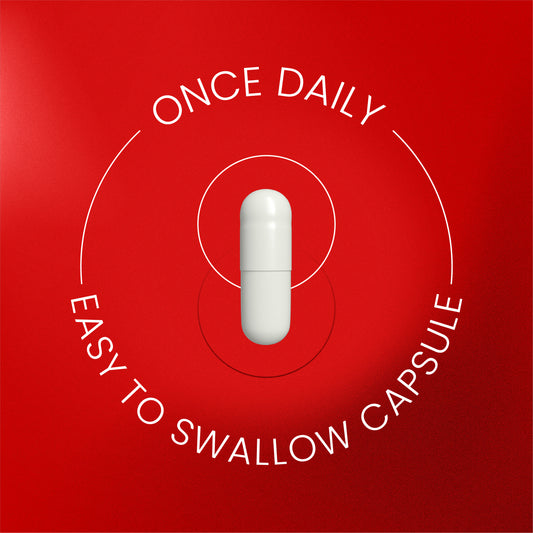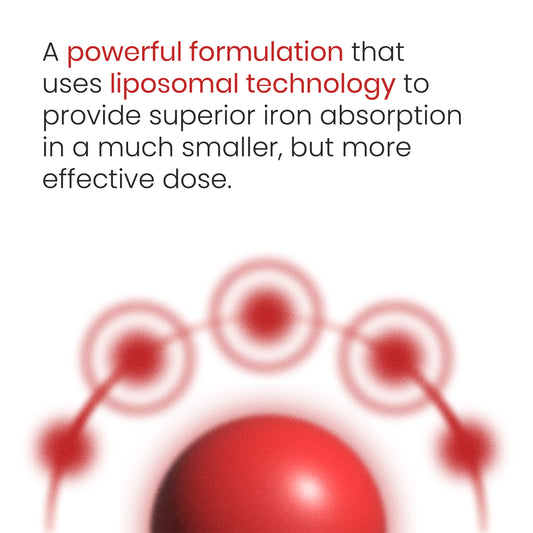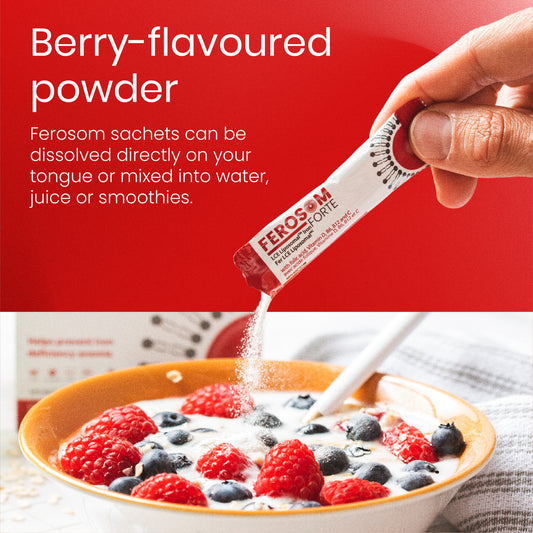

Do you feel cold? Like, all the time? There are many reasons why you might be struggling to shake off the chills, but anemia could be the cold culprit.
Anemia is a condition caused by low iron. Iron produces hemoglobin, which carries oxygen, nutrients, and heat all over the body through red blood cells. It’s a crucial nutrient for your overall health — and body temperature. Still, up to 25% of the entire world population struggles with an iron deficiency. Not cool.
Low iron makes it harder for your body to generate, store, and spread heat. That’s why several studies have proven that anemia is a major cause of poor thermoregulation and cold stress.
Read on to discover how it all works and what you can do to warm up and level out your body temp.
How does my body regulate temperature?
Your body is pretty amazing. So many pieces work together to keep you at your healthiest — and that includes your body temperature.
First up is the hypothalamus. The hypothalamus is a part of the brain that tells the rest of your body when it’s time to heat things up or cool things down. Think of it as your body’s thermostat.
Next is your thyroid gland. The thyroid controls your metabolism, which is crucial for creating heat in the body. It also helps you burn calories to generate warmth from head to toe.
Two more important parts of the thermoregulation puzzle are blood flow and body fat. If your bloodstream is moving seamlessly, it can help spread heat throughout the body. Meanwhile, body fat maintains the heat once it has spread.
And, like most processes in your body, overall health and wellbeing are crucial for temperature regulation. The healthier you are as a whole, the better your body will be at generating heat or cooling off.
Why am I always cold when everyone around me is just fine?
It’s called cold intolerance, and it’s more common than you might think.
Cold intolerance means you’re extremely sensitive to cold temperatures. It might be an “all over” feeling, or a sensation in certain parts of your body like your hands or feet.
There are many potential causes of cold intolerance. The most obvious is the temperature regulation system we just learned about. If your hypothalamus, thyroid, blood flow, or body fat aren’t thriving, your body won’t be able to generate heat and get it everywhere it needs to go.
Certain health conditions can also cause cold intolerance:
- Anorexia, due to the loss of body fat
- Hypothyroidism, which causes the thyroid to not function properly
- Fibromyalgia, a condition that causes chronic pain all over the body
- Anemia or iron deficiency
Does iron regulate body temperature?
Iron is an essential nutrient for so many reasons. It gives us energy, keeps us moving, and makes every part of our body function at its best. Temperature regulation is no exception.
As we know, iron creates hemoglobin, which moves oxygen across the body. When oxygen gets to your tissues, it helps them conserve and generate heat. But if you have low hemoglobin and your tissues aren’t getting enough oxygen, the opposite happens.
That’s how iron deficiency anemia blocks heat production, causes heat loss, and slows down your thyroid tissue’s normal hormone production.
It can also impact thermoregulation in more unexpected ways. For example, one of your body’s first physical responses to being cold is shivering. It’s supposed to create more heat through movement. But if you have low iron and your muscles aren’t getting enough oxygen, your muscle function decreases and even shivering becomes a struggle.
Case in point: research shows that more iron and red blood cells in the body = better temperature regulation.
Can low iron cause hypothermia?
Most people think of hypothermia as something that only happens if you’re out in the cold for too long. But it can sometimes be caused by health conditions, like diabetes, drug or alcohol abuse, thyroid issues, and anemia.
Anemia often causes something called hypoxia. It’s a fancy word for low oxygen in the tissues, which we know is a major symptom of iron deficiency. This can lead to hypoxia-induced hypothermia (sometimes called cold stress), which means your body is losing heat faster than it can generate it.
Signs of hypothermia include excessive shivering, shallow breathing, exhaustion, slurred speech, clumsiness, or a weak pulse. Hypothermia can be dangerous and potentially life-threatening if it is not treated effectively. If you or someone you’re with is showing signs of hypothermia, call the doctor immediately or go to urgent care if necessary.
Will increasing my iron intake improve my body’s ability to thermoregulate?
The answer is almost always yes, but it does depend on what’s causing your cold intolerance. Make sure you talk to your doctor first about your symptoms, health, and lifestyle before relying on an iron boost to solve the problem.
If you and your doc agree that more iron might help, there are a few ways to go about it. The first is adding more iron-rich foods to your diet, like:
- Red meat or poultry
- Seafood
- Beans and legumes
- Nuts and seeds
- Iron-fortified grains
- Dark green leafy vegetables, like spinach
Try eating more of these foods along with a source of Vitamin C, like orange juice or citrus fruits. Iron with vitamin c naturally increases iron absorption, so more iron can be stored in your body.
If you want a more convenient, quick, and effective way to boost your iron, a supplement is your best bet.
What’s the best iron supplement to regulate my body temperature?
Even though supplements are the fastest way to get more iron, a lot of people shy away from them. Why? Because most iron supplements cause horrible side effects, like constipation, nausea, bloating, and gas. These harsh gastro-intestinal (GI) symptoms can harm your overall health and make it even harder for your body to regulate temperature.
The trick is to find a supplement that is specially formulated to skip those side effects while increasing absorption. AKA, Ferosom Forte.
Microencapsulated in Liposomal form and infused with Vitamin C, Ferosom is designed for maximum absorption. It has a proprietary LCE Coat™ that protects it from acid breakdown as it moves through the stomach. That means more iron gets absorbed into your body, and less gets dissolved into your GI tract.
Why is Liposomal so awesome? The bioavailability of liposomal iron is 3.5 times greater than the free pyrophosphate iron, 2.7 times higher than iron sulfate, and 4.1 times higher compared with iron gluconate. In other words, it has one of the highest absorption rates out there.
Discover Ferosom Forte here and talk to your doctor about how it can help get your body temperature back to normal.





